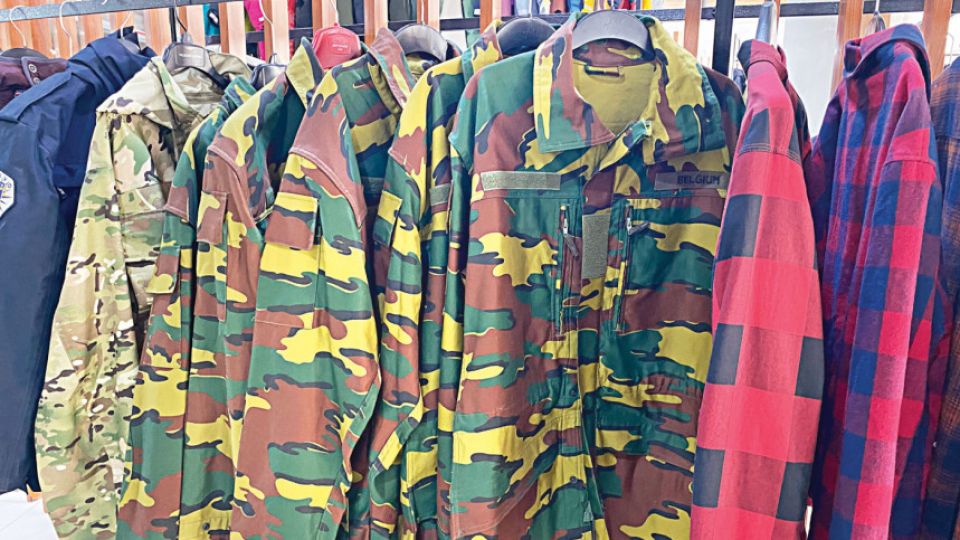February 16, 2022
DHAKA – Bangladesh has turned into a major sourcing hub for uniforms for the military, navy, air force, fire brigade and police for countries around the world as local garment manufacturers have enhanced their capacity and diversified products.
The country has also been a good source to supply dresses to the army of the North American Treaty Organisation (Nato), an intergovernmental military alliance, for many years.
However, manufacturers mainly supply the uniforms indirectly: international retailers and brands place work orders with Bangladeshi factories and they supply the products to the forces.
For instance, Team Group, a garment exporter, supplies uniforms to the Belgian army and Kosovo police through a buyer.
“Currently, I am making uniforms for the army of Belgium and the police of Kosovo. The quantity is small but I have the capacity to produce a lot,” said Abdullah Hil Rakib, managing director of the company.
Last year, Team Group exported garment items, mainly outerwear, worth $36 million. Uniforms account for nearly 2 per cent of the shipment to the countries, mainly in Europe.
Uniforms of forces, personal protective equipment, technical clothes, medical bed sheets and medical clothes have a huge market worldwide, according to Rakib.
“Bangladesh needs to improve the capacity to grab the globally value-added garment markets.”
The global market size of technical clothing items is more than $370 billion.
Of over $31 billion garment exports from Bangladesh, defence dresses fetch between $400 million and $500 million annually, according to industry insiders.
The growing production of uniforms indicates that Bangladesh is gearing up to capture more market shares in the high-end value-added garment segment. And like Rakib, many garment factories are producing uniforms for the forces in many countries.
Although Snowtex, an outerwear exporter, does not produce uniforms for defence forces, it makes and ships similar dresses for customers. It also produces work apparel and outerwear for farmers, engineers, firefighters and other professionals.
Snowtex’s Managing Director SM Khaled says the market of outerwear is growing at a faster rate because of higher demand.
The company is set to export $300 million worth of garment items in 2022, which will include $50 million worth of outerwear.
Urmi Group, another garment supplier, used to manufacture uniforms for the Belgium army a few years ago, albeit in a small quantity.
“We have the potential to grab the market as we are diversifying products,” said Asif Ashraf, managing director of the group, adding that buyers either supply fabrics or nominate suppliers to make the uniforms for forces.
Faruque Hassan, president of the Bangladesh Garment Manufacturers and Exporters Association (BGMEA), thinks Bangladesh’s next growth potential lies in the high-end value-added garment items.
“Accordingly, the industry is switching to technical and high-end value-added garment items. A good number of garment factories are already supplying uniforms to fire departments in many countries.”
The BGMEA is carrying out a study in collaboration with an Indian firm to find out the markets of uniforms so that local manufacturers can raise their share in the segment. The outcomes of the study might be known within the next two to three months.
Local garment producers have targeted two kinds of uniforms: professional and school uniforms.
Currently, many factories are exporting school uniforms to European nations.
However, making professional uniforms is complicated and expensive as it needs a lot of coarse yarn. As Bangladesh does not produce cotton, Pakistan is performing strongly in the segment since the country is a major producer of the key textile raw material, Hassan said.
Mohammad Ali Khokon, president of the Bangladesh Textile Mills Association, says currently, some mills are producing military and tent fabrics and supplying them to other countries.
“Many mills are capable of producing uniform fabrics as they have upgraded technologies.”
Manufacturing fabrics for professional uniforms requires strong printing technologies in which Bangladesh is already a good performer, the entrepreneur added.
“Bangladesh is investing to produce man-made fibre. So, local weavers can supply the required fabrics to garment makers for the production of more uniform fabrics.”


